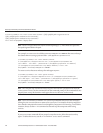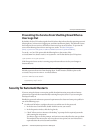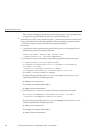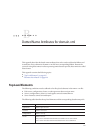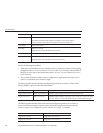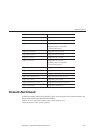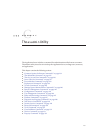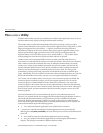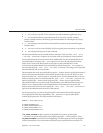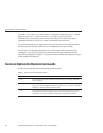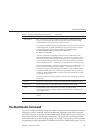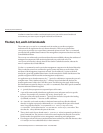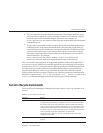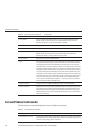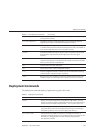
The asadmin Utility
Use the asadmin utility to perform any administrative tasks for the Application Server. You can
use this asadmin utility in place of using the Administrator interface.
The asadmin utility invokes subcommands that identify the operation or task you wish to
perform. Subcommands are case-sensitive. Short option arguments have a single dash (-); while
long option arguments have two dashes (--). Options control how the utility performs a
subcommand. Options are also case-sensitive. Most options require argument values except
boolean options which toggle to switch a feature ON or OFF. Operands appear after the
argument values, and are set o by a space, a tab, or double dashes (--). The asadmin utility
treats anything that comes after the options and their values as an operand.
asadmin can be used in command shell invocation or multi command mode (known as
multimode). In command shell invocation you invoke the asadmin utility from your command
shell. asadmin executes the command, then exits. In multiple command mode, you invoke
asadmin once, it then accepts multiple commands until you exit asadmin and return to the
normal command shell invocation. Environment variables set while in multiple command
mode are used for all subsequent commands until you exit multimode. You may provide
commands by passing a previously prepared list of commands from a le or standard input
(pipe). Additionally, you can invoke multimode from within a multimode session; once you exit
the second multimode environment, you return to your original multimode environment.
You can also run the asadmin utility in interactive or non-interactive options. By default, the
interactive option is enabled. It prompts you for the required arguments. You can use the
interactive option in command shell invocation under all circumstances. You can use the
interactive option in multimode when you run one subcommand at a time from the command
prompt; and when you run in multimode from a le. Subcommands in multimode , when piped
from an input stream, and subcommands invoked from another program, cannot run in the
interactive option.
Local subcommands can be executed without the presence of an administration server.
However, it is required that the user be logged into the machine hosting the domain in order to
execute the subcommand and have access (permissions) for the installation and domain
directories. Remote subcommands are always executed by connecting to an administration
server and executing the subcommand there. A running administration server is required. All
remote subcommands require the following options:
■
-u --user authorized domain application server administrative username.
■
--passwordfile the le containing the domain application server password in the
following form: AS_ADMIN_PASSWORD=password. Where password is the actual administrator
password.
■
-H --host machine name where the domain application server is running.
■
-p --port port number of the domain application server listening for administration
requests. The default port number for Platform Edition is 4848.
The asadminUtility
SunGlassFishEnterpriseServer2.1AdministrationGuide • December2008232



